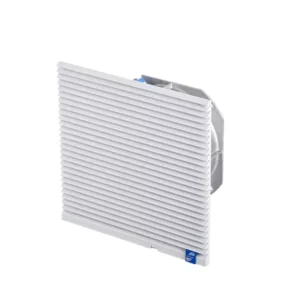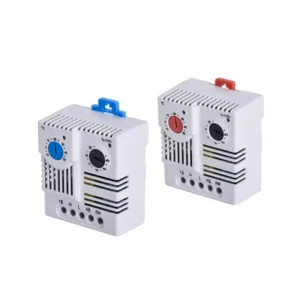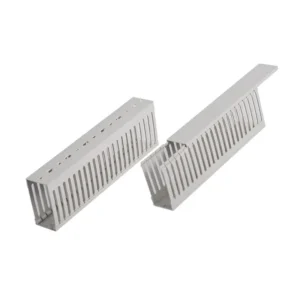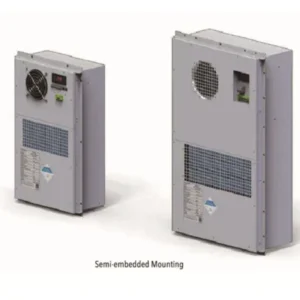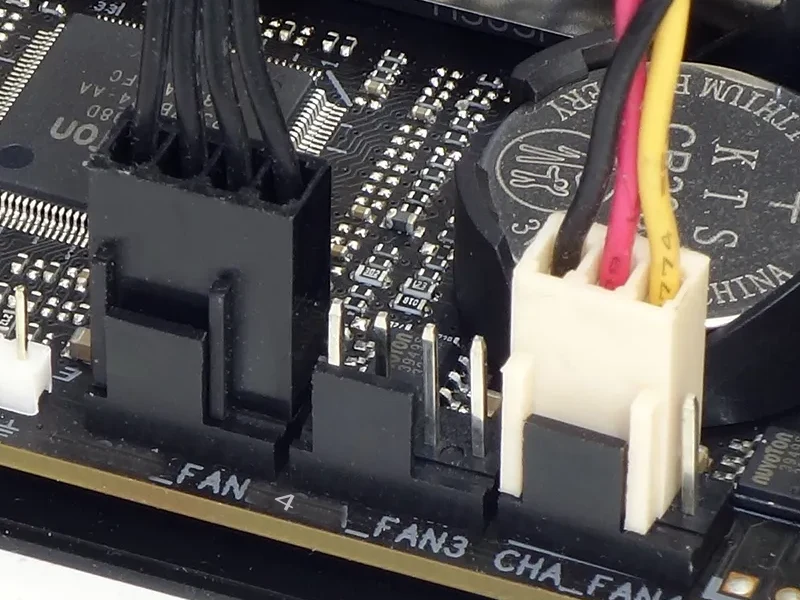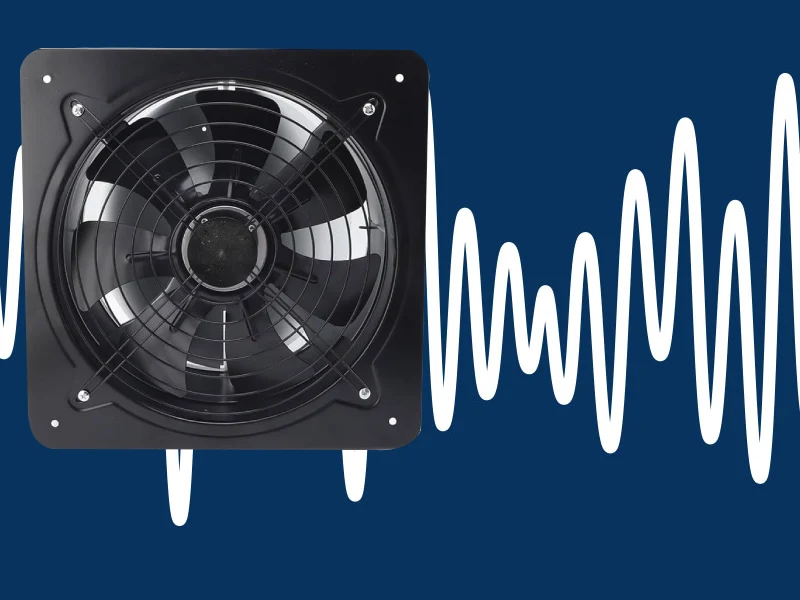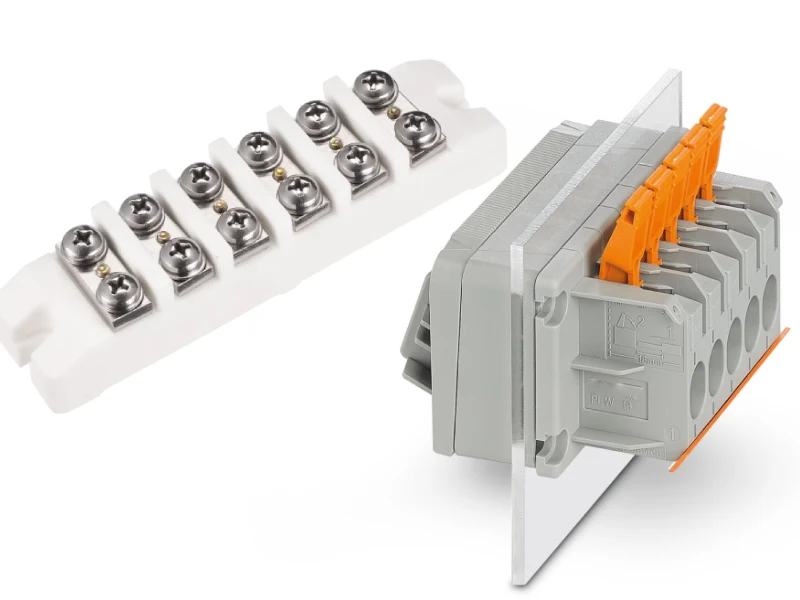Have you ever wondered why some electronics need special boxes to stay safe? Enclosures protect your electronics from dust, water, and even curious hands. Choosing between indoor and outdoor options matters a lot. If you use the wrong type, your electronics might fail early.
The indoor vs outdoor electronics enclosures debate usually comes down to where you plan to install them and what kind of protection your electronics need.
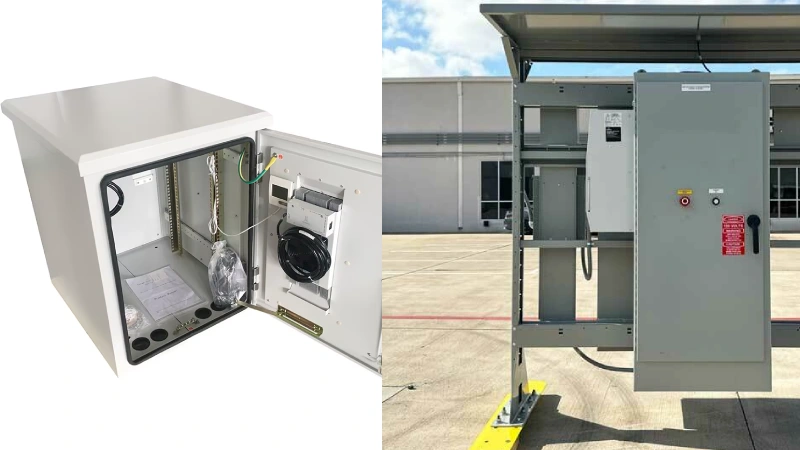
Indoor vs Outdoor Electrical Panel Key Takeaways
- Choose indoor enclosures for controlled environments; they use lighter materials and offer basic protection against dust and splashes.
- Select outdoor enclosures for harsh conditions; they use rugged, weatherproof materials and provide strong protection against rain, dust, and vandalism.
- Match the enclosure’s NEMA or IP rating to your environment to ensure proper protection and longer electronics life.
- Consider security and climate control features, especially outdoors, to prevent tampering and protect against temperature extremes.
- Plan your budget and maintenance needs carefully; outdoor enclosures cost more and require more upkeep but offer greater durability.
Enclosures Overview
Purpose and Function
You might wonder why enclosures matter so much for electronics. These boxes do more than just hide wires. They give your devices a safe home and keep them working longer. Enclosures offer protection from dust, water, and even accidental bumps. If you have sensitive equipment, you need to keep out moisture and prevent corrosion or short circuits. Sealed enclosures with gaskets can create a watertight barrier, which is perfect for harsh conditions. Some enclosures also help with heat dissipation. Fans, ventilation systems, or heat sinks keep your electronics cool and running smoothly. You also get better cable management and organization, which makes maintenance easier. When you use the right enclosure, you make troubleshooting and repairs much simpler.
Tip: Choosing the right enclosure means fewer headaches and less downtime for your electronics.
Key Materials
The materials you choose for enclosures play a huge role in how well they protect your electronics. You will see metals like stainless steel, aluminum, and carbon steel in many industrial settings. These materials are tough, resist corrosion, and handle harsh environments well. Aluminum stands out because it is lightweight and weatherproof. Stainless steel is a favorite for food, pharma, and marine industries because it is easy to clean and resists rust. On the other hand, plastic enclosures—like those made from polycarbonate or ABS—are lightweight, cost-effective, and provide great electrical insulation. They work well for portable devices and consumer electronics.
| Enclosure Type | Material Examples | Key Uses and Features |
|---|---|---|
| Metal Enclosures | Aluminum, Stainless Steel, Carbon Steel | Industrial automation, control rooms; offer durability, corrosion resistance, and thermal management. |
| Plastic Enclosures | Polycarbonate, ABS | Portable devices, IoT, routers; provide insulation, impact resistance, and design flexibility. |
| NEMA-Rated Enclosures | NEMA 4, 4X, 6, 12 | Industrial settings; protect against dust, water, and mechanical impacts. |
In 2023, plastic enclosures made up 55% of the market, while metal enclosures held 45%. Plastics are growing fast because they are light, durable, and affordable. Metals still have a strong presence due to their strength and reliability. Fiberglass and composite materials also play a role, especially where corrosion resistance or a high strength-to-weight ratio is needed.
Indoor Electronics Enclosures
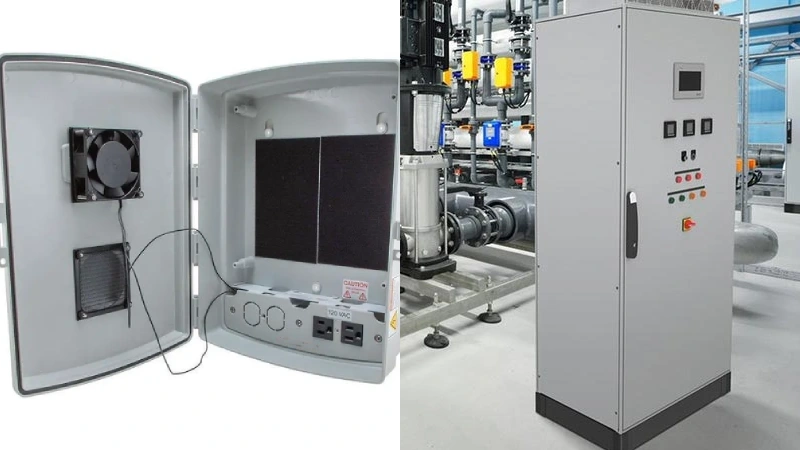
Materials and Design
When you choose indoor electronics enclosures, you have a lot of options for materials. Metals like carbon steel, stainless steel, and aluminum give you strength and durability. Plastics such as ABS and polycarbonate are lightweight and cost-effective. Fiberglass works well if you need extra impact or chemical resistance. Each material affects how your enclosures perform and how much protection they offer.
| Material | Common Types/Variants | Performance Impact and Characteristics |
|---|---|---|
| Metals | Carbon Steel, Stainless Steel, Aluminum | Strong, durable, corrosion resistant; metals provide EMI shielding and good heat dissipation. |
| Plastics | ABS, Polycarbonate, PC+ABS blends | Lightweight, cost-effective, electrically insulating; polycarbonate is tough and flame-retardant. |
| Fiberglass | Fiberglass-reinforced polyester (FRP) | Strong, durable, good for high temperatures and chemicals; more expensive. |
You can see that material choice shapes the enclosure’s strength, weight, and ability to shield electronics from interference. Linkewell offers a wide range of accessories for indoor enclosures, including ventilation systems, terminal blocks, and wiring ducts, so you can build a setup that fits your needs.
Protection Ratings
Indoor electronics enclosures come with different protection ratings. These ratings tell you how well the enclosure keeps out dust, water, and other hazards. Most indoor enclosures use NEMA or IP ratings. Here’s a quick look:
| NEMA Type | Description for Indoor Use | Corresponding IP Code |
|---|---|---|
| 1 | General-purpose; protects against dust, light, and indirect splashing | IP20 |
| 2 | Drip-tight with drip shields; good for condensation areas | IP22 |
| 5 | Dust-tight with gaskets; keeps out dust | IP53 |
| 12, 12K, 13 | Protects against dust, dirt, and dripping liquids | IP54 |
You want to match the protection rating to your environment. For most indoor applications, NEMA 12 or IP54 gives you solid protection against dust and spills.
Security Features
Security matters when you need to keep your electronics safe from tampering or theft. Indoor electronics enclosures often include security features like built-in locks, padlock attachments, and tamper-resistant designs. Some enclosures support digital keypad locks or even connect to surveillance cameras for extra peace of mind.
- Simple key locks or digital keypad locks control access.
- Tamper-resistant bolts and concealed hinges make it harder for someone to break in.
- Alarm systems and IoT-enabled monitoring can alert you if someone tries to open the enclosure.
Tip: Always check that your enclosure’s security features match your facility’s needs.
Common Uses
You will find indoor electronics enclosures in many places. In factories, they protect control panels from dust and vibration. In offices, they house electrical panels and networking gear. Data centers use them for servers and switches. Retail stores rely on them for security systems and point-of-sale devices. These enclosures keep your electronics organized and safe in all these common applications.
Customization
Sometimes, standard enclosures just don’t fit your project. Customization lets you pick the right materials, size, and features. You can add special cutouts, extra ventilation, or mounting options. Linkewell helps you customize with accessories like wiring ducts and terminal blocks, so your enclosure matches your exact needs. Custom enclosures can also include special coatings, branding, or extra security features.
Note: Customizing your enclosure saves space, improves airflow, and makes maintenance easier.
Outdoor Electronics Enclosures
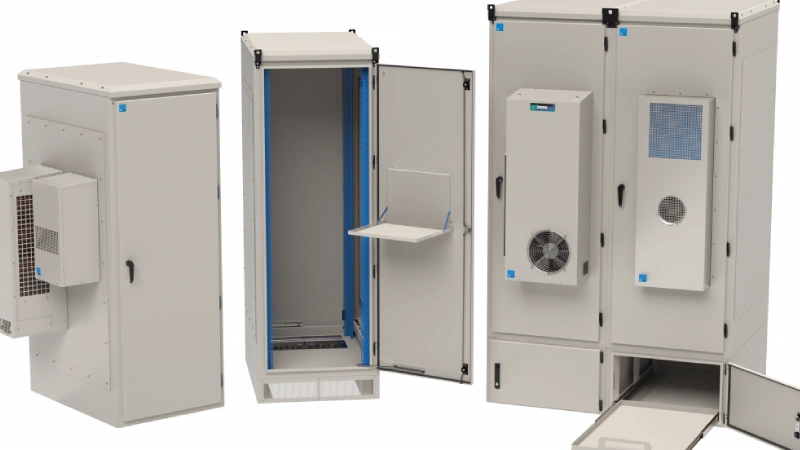
Materials and Construction
When you look at outdoor electronics enclosures, you notice they use tough materials. You often see stainless steel, fiberglass, and polycarbonate. These materials stand up to rain, dust, snow, and even UV rays. Stainless steel and fiberglass offer strong corrosion resistance, so they do not rust in coastal or industrial areas. Polycarbonate is lightweight and impact-resistant, making it a smart choice for many outdoor applications. Outdoor enclosures are robust and designed for harsh environments, unlike indoor options that use lighter materials like aluminum or mild steel.
- Stainless steel: resists corrosion and tampering
- Fiberglass: non-conductive and cost-effective
- Polycarbonate: impact-resistant and allows signal transmission
Weatherproofing
Weatherproofing is a must for outdoor enclosures. You want to keep water, dust, and chemicals out. Outdoor electronics enclosures use gaskets, seals, and special coatings to block moisture and dirt. Waterproof designs prevent rain from getting inside, while dustproof features keep particles away from sensitive electronics. Corrosion-resistant coatings add another layer of protection. The importance of weatherproofing cannot be overstated—your equipment depends on it.
Tip: Always check for IP65 or higher ratings to ensure your enclosure can handle tough weather.
Protection Ratings
You need to pay attention to protection ratings like NEMA and IP. Outdoor electronics enclosures often meet NEMA 4, NEMA 4X, or even NEMA 6P standards. These ratings mean the enclosure is dust-tight, resists water jets, and can even handle temporary submersion. IP65, IP66, and IP67 ratings show strong defense against dust and water. High IK ratings mean the enclosure can take a hit without breaking. Linkewell’s IP65/NEMA 4 products are designed for harsh environments and give you peace of mind.
Security and Durability
Security matters a lot outdoors. You want enclosures with strong locks, tamper-resistant screws, and hidden hinges. Stainless steel and reinforced plastics boost durability and protect against vandalism. The table below shows key security features:
| Security Feature | Description | Benefit |
|---|---|---|
| Locking Mechanisms | Keyed or electronic locks | Stops unauthorized access |
| Tamper-Resistant Design | Special screws, hidden hinges | Makes tampering harder |
| Material Strength | Stainless steel, reinforced plastics | Resists impact and vandalism |
| Compliance | NEMA/IP/IK ratings | Meets safety requirements |
Climate Control
Outdoor electronics enclosures face extreme temperatures. You need climate control to prevent overheating or condensation. Insulation helps, but active solutions work best. Linkewell’s Cabinet Air Conditioner keeps your electronics cool, even in hot weather. The Enclosure Heater protects against freezing and stops condensation. Fans, heat exchangers, and thermostats also help maintain the right temperature. These features extend the life of your equipment and reduce maintenance.
Common Uses
You see outdoor electronics enclosures everywhere. They protect telecom gear, Wi-Fi devices, and 5G antennas. Utilities use them for control boxes, junction boxes, and automation sensors. Polycarbonate enclosures are popular in telecom because they do not block signals. Stainless steel and aluminum work well for utility boxes and control panels. Outdoor enclosures keep your electronics safe from wind, rain, and vandals.
Customization
You can customize outdoor enclosures to fit your needs. Choose the right size, add cutouts for cables or antennas, and pick special coatings for extra corrosion resistance. Custom mounting options help secure your electronics. You can even add vents, cable glands, or climate control units. Linkewell offers tailored solutions, so your enclosure matches your exact requirements.
Indoor vs Outdoor Electronics Enclosures
When you compare indoor vs outdoor electronics enclosures, you notice some key differences right away. These differences affect how well your electronics stay safe, how much you spend, and how easy it is to maintain your setup. Let’s break down the critical differences between indoor and outdoor enclosures so you can make the best choice for your application.
Materials Comparison
The first thing you’ll spot is the materials. Indoor enclosures usually use lighter materials like ABS plastic, polycarbonate, or thinner steel. These materials work well in controlled environments where you don’t face harsh weather or heavy impacts. Outdoor enclosures, on the other hand, need to handle rain, sun, wind, and even vandalism. You’ll find rugged materials like stainless steel, galvanized steel, fiberglass, and reinforced polycarbonate in outdoor models. These materials boost durability and help the enclosure last longer outside.
| Feature Category | Indoor Enclosures | Outdoor Enclosures |
|---|---|---|
| NEMA Ratings | Typically Type 1, 2, 12, 13; protect against dust, light splashes; often vented without gaskets | Higher ratings like Type 3, 4, 5, 6, 4X; protect against heavy rain, windblown dust, corrosion, temporary submersion |
| Construction Materials | Thinner gauge steel or plastics; less corrosion resistant materials like steel; lighter duty design | Rugged materials such as aluminum or galvanized steel; corrosion resistant; include welding, powder coating, and gaskets |
| Design Ruggedness | Designed for less harsh environments; less deflection testing; lighter construction | Built to withstand hailstorms, heavy rain, wind, falling objects; more robust and durable design |
You can see that outdoor enclosures focus on ruggedness and weather resistance, while indoor enclosures prioritize light weight and easy installation.
Protection and Security
Protection and security are two of the most important factors when choosing between indoor vs outdoor electronics enclosures. Indoor enclosures usually have lower NEMA and IP ratings. They protect against dust, light splashes, and accidental bumps. Outdoor enclosures need to block out rain, snow, windblown dust, and even temporary submersion. That’s why you’ll see higher NEMA ratings like 4, 4X, or 6 on outdoor models.
| NEMA Rating | Protection Level & Environment | Typical Use Case & Security Features |
|---|---|---|
| NEMA 1, 2, 12 | Protection against dust, dripping water, light splashes; indoor use | Indoor enclosures; minimal security needed due to secure environment |
| NEMA 3, 4, 4X, 6, 6P | Protection against rain, sleet, snow, hose-directed water, windblown dust, corrosion, temporary submersion; outdoor use | Outdoor enclosures; require locking doors, alarms, corrosion resistance, and rugged construction |
Outdoor enclosures often come with extra security features. You might see locking doors, tamper-resistant screws, or even alarms. These features help prevent theft or vandalism, which is a bigger risk outside. Indoor enclosures rely more on the security of the building itself, so they usually have fewer built-in security features.
Tip: Always match the NEMA and IP ratings to your environment. Higher ratings mean better protection for your electronics.
Cost and Maintenance
Cost and maintenance can make a big difference in your decision. Indoor enclosures cost less because they use lighter materials and simpler designs. You’ll often find ABS plastic or polycarbonate at a lower price point. Maintenance is easy, too. Most indoor enclosures only need basic cleaning and occasional checks.
Outdoor enclosures cost more. They use high-grade materials like stainless steel or fiberglass, which are more expensive. You also need to pay for extra features like gaskets, powder coatings, and advanced locking systems. Outdoor models often require active cooling, such as air conditioners or thermoelectric coolers. These systems need regular maintenance and increase your operating costs.
| Aspect | Indoor Enclosures | Outdoor Enclosures |
|---|---|---|
| Material Cost | Lower cost materials like ABS plastic; polycarbonate for moderate cost with IP/NEMA ratings | Higher cost materials like fiberglass or die-cast for UV/weather resistance; stricter NEMA 4 or 4X ratings increase cost |
| Cooling Methods | Typically use fans or vortex cooling; low initial and operating costs; lower maintenance | Require robust cooling such as air conditioners or thermoelectric coolers; higher initial and operating costs; higher maintenance due to power and battery backup needs |
| Maintenance Requirements | Lower maintenance due to simpler cooling systems and less environmental exposure | Higher maintenance due to active cooling systems, power requirements, and environmental protection needs |
| Environmental Protection | Less stringent; usually NEMA 12 suitable for general indoor use | Must meet stricter environmental ratings (NEMA 4/4X) to protect against weather and contaminants |
You’ll spend more time and money maintaining outdoor enclosures. You need to check seals, clean filters, and service cooling units. Indoor enclosures need less attention because they face fewer hazards.
Accessories
Accessories can help you get the most out of your enclosures. Indoor enclosures often use simple add-ons like wiring ducts, terminal blocks, or basic fans. These accessories help with cable management and airflow but don’t need to handle harsh conditions.
Outdoor enclosures need more advanced accessories. You might add grounding systems, surge protectors, or climate control units like air conditioners and heaters. Door alarms and extra locks boost security. These accessories help outdoor enclosures handle extreme weather and keep your electronics safe.
Recommended products
- Indoor enclosure accessories:
- Wiring ducts
- Terminal blocks
- Basic fans
- Outdoor enclosure accessories:
- Grounding systems
- Surge protection
- Cabinet air conditioners
- Enclosure heaters
- Door alarms and advanced locks
Note: The right accessories can extend the life of your electronics and make maintenance easier, whether you choose indoor or outdoor enclosures.
When you look at the key differences between indoor vs outdoor electronics enclosures, you see that each type has its own strengths. Indoor enclosures focus on easy installation and low cost. Outdoor enclosures deliver maximum protection, security, and durability for harsh environments. Always consider your environment, the level of protection you need, and your budget before making a choice.
Choosing Enclosures
Assessing Environment
Start by looking at where you plan to use your enclosures. Will you install them in an indoor office, a busy factory, or an outdoor location exposed to rain and sun? Each environment brings its own risks. You need to think about moisture, dust, chemicals, and temperature swings. Even indoor spaces can have dust or accidental spills. Outdoor areas might face rain, snow, UV rays, and even salt in coastal regions.
- Check if your enclosures need to resist water, dust, or chemicals.
- Think about temperature extremes and if the electronics inside will generate heat.
- Look for impact risks, like forklifts or falling tools.
- Decide if you need clear covers for displays or dual compartments for power and signal separation.
- Make sure you can access the enclosure for maintenance.
Matching Protection
You want your electronics to last, so matching the right protection level is key. The NEMA and IP ratings help you compare options. Here’s a quick comparison guide:
| NEMA Rating | Environmental Protection Description | Closest IP Rating | IP Protection Description |
|---|---|---|---|
| NEMA 1 | Indoor general protection | IP10 | Blocks large objects |
| NEMA 3 | Outdoor rain, sleet, dust | IP54 | Dust and water jets |
| NEMA 4 | Indoor/outdoor, watertight, sleet | IP56 | Dust and water jets |
| NEMA 4X | Adds corrosion resistance | IP56 | Dust, water, corrosion |
| NEMA 6 | Submersion, sleet | IP67 | Dust, water submersion |
| NEMA 12 | Indoor dust and drip | IP52 | Dust, water spray |
Always match the protection rating to your environment. Outdoor enclosures need higher NEMA ratings, while indoor ones can use lower ratings if the risks are less.
Security and Climate Needs
Security and durability considerations matter, especially outdoors. You want strong locks, hidden hinges, and reinforced doors to keep out vandals. Stainless steel and tough plastics resist corrosion and damage. Climate control is just as important. Outdoor enclosures may need ventilation, fans, or even air conditioning to stop overheating. Heaters can prevent condensation and freezing. These features help your electronics last longer and reduce maintenance.
Tip: Custom options let you pick the right size, material, and features for your needs.
Budget and Maintenance
Think about your budget and how much time you want to spend on maintenance. Indoor enclosures usually cost less and need less upkeep. Outdoor enclosures cost more because they use stronger materials and extra protection. They might need regular checks for seals, filters, and climate control systems. Choosing the right solution up front can save you money and trouble later.
Step-by-Step Guide
Here’s a simple step-by-step plan for choosing enclosures:
- Check the environment—indoor or outdoor, and note all risks.
- Pick the right material for strength, corrosion resistance, and heat control.
- Choose the right size for your electronics and allow space for airflow.
- Match the protection rating (NEMA/IP) to your environment.
- Decide on security features and climate control needs.
- Plan for any custom features, like cutouts or mounting options.
- Review your budget and maintenance plans.
If you need help, Linkewell offers customizable enclosures for every application. You can get expert advice and tailored solutions for both indoor and outdoor needs.
Installation and Maintenance
Best Practices
Getting your enclosures set up the right way makes a big difference in how long your electronics last. You want to make sure you get the most out of your investment and keep everything safe. Here are some best practices you should follow:
- Pick enclosure materials that match your environment. For harsh chemical areas, steel or fiberglass works better than regular plastics. If you need outdoor protection, go for UV-stabilized plastics or metals.
- Always check that your enclosure has the right safety ratings, like UL, NEMA, or IP. These ratings help you balance cost and protection.
- Make sure you can mount the enclosure easily in your chosen spot. Good mounting keeps your electronics safe and avoids damage.
- Check that the enclosure can handle the weight of your equipment. This step helps prevent accidents and keeps everything secure.
- If you need special features, ask the manufacturer for custom modifications. This way, you get the right fit without risking the enclosure’s strength.
Tip: Don’t let price be your only guide. Focus on safety, durability, and the right features for your application.
Regular Checks
You can’t just install enclosures and forget about them. Regular checks help you catch problems early and keep your electronics running smoothly. Here’s a simple table to guide your maintenance routine:
| Aspect | Recommendation / Details |
|---|---|
| Baseline Maintenance Frequency | Do preventive maintenance every 3 years for most enclosures. |
| Increased Frequency Conditions | Check more often if you have lots of dust, moisture, or critical equipment. |
| Maintenance Activities | Clean panels and vents, wipe with solvent, inspect seals, gaskets, and heater elements. |
| Environmental Considerations | Look for water leaks, keep rooms clean, and maintain ventilation or air conditioning. |
| Manufacturer Guidance | Follow the manufacturer’s instructions and adjust your schedule if your environment is tough. |
Note: Regular cleaning and inspection help you spot issues before they turn into big problems. This keeps your electronics safe and extends the life of your enclosures.
Product Examples
When you want your electronics to last, you need the right tools to protect them. Linkewell offers solutions that help you control temperature and prevent damage inside your enclosures. Let’s look at two products that make a big difference for both indoor and outdoor setups.
Linkewell Cabinet Air Conditioner
If you worry about your electronics overheating, the Linkewell Cabinet Air Conditioner gives you peace of mind. This unit keeps your enclosures cool and dry, even in tough environments. You get smart controls and energy savings, so your equipment stays safe without wasting power.
Here’s what makes it stand out:
| Feature / Benefit | Description |
|---|---|
| High-Performance Cooling | Inverter compressors and EC fans deliver strong, efficient cooling for industrial and off-grid use. |
| Smart Digital Controls | Digital thermostats and remote control options make temperature management easy. |
| Wide Application Range | Works in factories, solar projects, and data centers. |
| Compact, Rugged Design | Fits tight spaces and handles harsh conditions. |
| Advanced Filtration | Closed-loop systems keep dust and moisture out of your enclosures. |
| Easy Installation | Multiple mounting options save you time and effort. |
| Certified Quality | Meets ISO9001, CE, ROHS, IP56, and IP66 standards. |
| After-Sales Support | Global maintenance team helps you keep things running smoothly. |
You can trust this air conditioner to protect your electronics from heat and humidity, no matter where you install your enclosures.
Linkewell Enclosure Heater
Cold weather can cause big problems for outdoor electronics. The Linkewell Enclosure Heater keeps your equipment safe by stopping condensation and freezing. You get reliable performance, even during harsh winters.
Here’s how it helps:
- Maintains a steady temperature inside your enclosures, usually around 15–20°C.
- Uses self-regulating heaters and thermostats to prevent freezing and moisture buildup.
- Keeps batteries and sensitive electronics working, even when it’s -10°C outside.
- Stops condensation, which can damage circuits and reduce battery life.
- Easy to install and adjust for different enclosure sizes.
With this heater, you don’t have to worry about your electronics failing in the cold. Your systems stay up and running, no matter the weather.
Choosing between indoor and outdoor enclosures comes down to your environment and what your electronics need. Here’s a quick comparison:
| Factor | Indoor Enclosures | Outdoor Enclosures |
|---|---|---|
| Environment | Controlled, minimal hazards | Exposed to weather and physical threats |
| Materials | Lightweight, cost-effective | Rugged, weatherproof, corrosion-resistant |
| Protection Rating | NEMA 1 or 2, basic protection | NEMA 4, 4X, IP55+, strong defense |
| Security | Basic locks | Enhanced locks, alarms, impact resistance |
| Climate Control | Usually not required | Critical—air conditioners, heaters, ventilation |
| Durability | For indoor impacts | Withstands corrosion, UV, and extreme weather |
You want the right enclosure to keep your electronics safe and running. If you’re not sure what fits best, Linkewell offers reliable, customizable solutions. Take a moment to review your current enclosures or reach out to an expert for advice.
FAQ
What’s the main difference between indoor and outdoor enclosures?
Indoor enclosures work best in controlled spaces. Outdoor enclosures handle rain, dust, and extreme temperatures. You need outdoor models for harsh environments. Always check the protection rating before you choose.
Tip: Outdoor enclosures usually have higher NEMA or IP ratings for extra protection.
How do I know which protection rating I need?
Look at your environment. If you see water, dust, or chemicals, pick a higher NEMA or IP rating. For most indoor uses, NEMA 12 or IP54 works well. Outdoor setups often need NEMA 4, 4X, or IP65.
Can I use an indoor enclosure outside if I add weatherproofing?
No, you shouldn’t. Indoor enclosures lack the rugged materials and seals needed for outdoor use. Even with extra weatherproofing, they can fail quickly. Always pick an enclosure designed for outdoor conditions.
Do I need climate control for my enclosure?
If your electronics get hot or face cold weather, you do. Use air conditioners or heaters to keep temperatures steady. This helps your equipment last longer and work better.
- Linkewell offers cabinet air conditioners and enclosure heaters for both needs.
How often should I check or maintain my enclosure?
Check your enclosure every few months. Clean vents, inspect seals, and look for damage. If you use climate control, clean filters and test the system. Regular checks help you catch problems early and avoid downtime.
Conclusion
Choosing the right electrical panel depends on your environment. Indoor panels are cost-effective, lightweight, and ideal for controlled spaces. Outdoor panels are rugged, weatherproof (NEMA 4/IP66+), and resist corrosion, UV rays, and vandalism.
Always match the NEMA/IP rating to your conditions—higher ratings mean better protection. For harsh climates, add climate control (heaters/AC). Prioritize security, durability, and maintenance needs to ensure long-term reliability. Select wisely to avoid premature failures and costly repairs.

